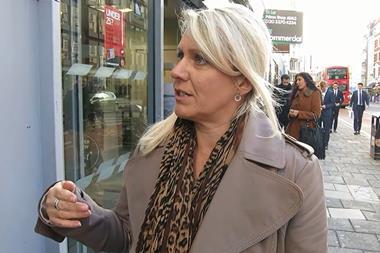Whilst I’m not necessarily representative of all men aged 18 to 35, if I stand in front of the Tesco OptimEyes screen and it displays an ad tailored to me in a petrol station, Mini Babybel and Costa might find a lot of its ad inventory being used.
Whilst I’m not necessarily representative of all men aged 18 to 35, if I stand in front of the Tesco OptimEyes screen and it displays an ad tailored to me in a petrol station, Mini Babybel and Costa might find a lot of its ad inventory being used.
In the past few days, a great deal has been written about the Tesco and Amscreen deal, much of it based around the issue of privacy.
This debate is important (more on that later), yet from the perspective of a media agency with many years of experience in the retail field, I worry the core point has been missed.
Trials like this are critical to innovation, to move businesses forward, to understand and create new value commercially and culturally.
The purpose of experimentation is to understand what works, and what does not. Tests allow us to see how a new technology and targeting approach could work best for retailers.
If it works, brands will be able to create the right balance between intrusive and effective messaging, resulting in content that is useful to people, not irrelevant.
If it fails, there will be masses of feedback data, both positive and negative, that will help us refine and improve the way we can effectively reach our audiences.
OptimEyes-type technology is still in its infancy and we may well find that instead of perhaps using it to target an audience and deliver relevant ads, we might be able to use the data in order to measure engagement and reaction to specific content.
We’re seeing lots of innovation in getting closer to the consumer at the point of retail, generally through mobile, as this is a battleground that massively influences purchase.
OptimEyes is just one of many technologies and approaches to engaging with your customers near the point of sale, and any one single activity is probably not enough to make a customer switch or think twice. Holistic measurement of all of your activity is critical to understand whether your marketing mix is effective, not pinning your measurement on a single tactic.
We must not forget the privacy concern, and I think the main warning here is for retailers.
Brands must be respectful and transparent about how and why they are using this technology, rapidly show the benefits and value to the consumer, ask for feedback and reaction, and offer a way of opting out, should folk not want to be profiled using a system like this.
Consumers will be the ultimate arbiters of whether they think their privacy has been betrayed, and can opt out by voting with their feet, choosing not to patronise a brand. And no brand wants their choice of a new technology to lose them customers. And no technology should stop me from getting a small cheese snack and a steaming shot of caffeine.
- Matthew Knight, Head of Innovation, Carat


























No comments yet